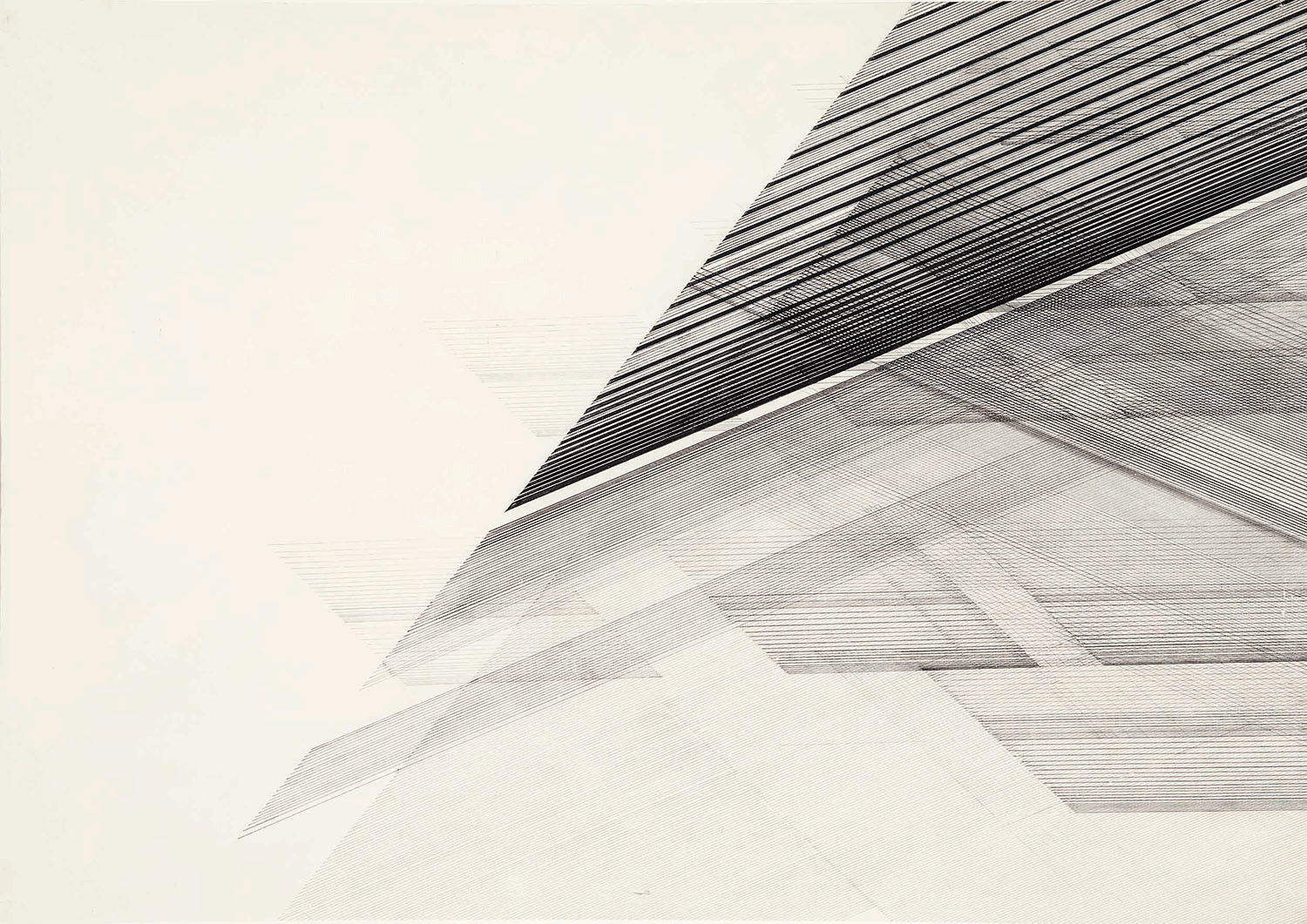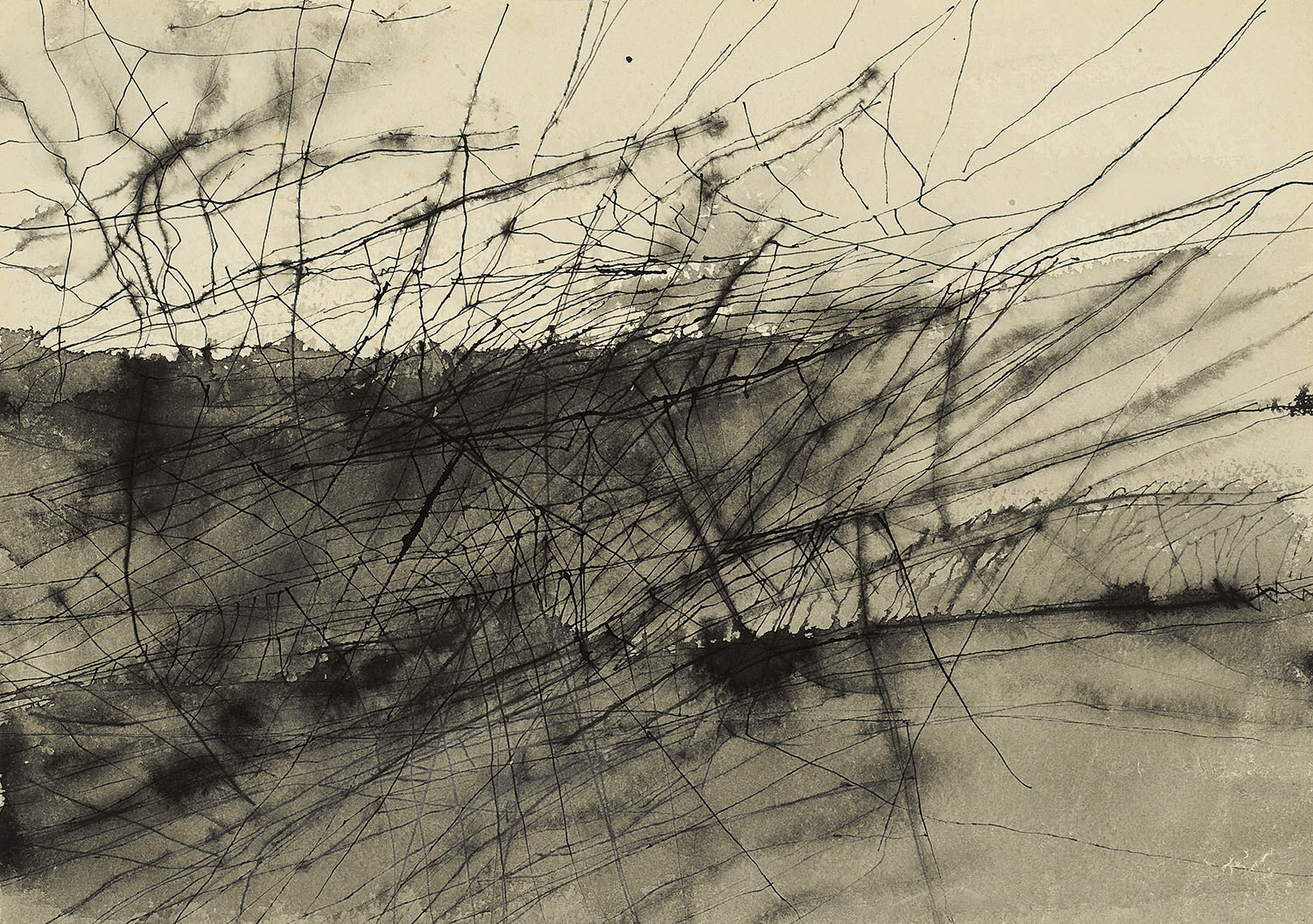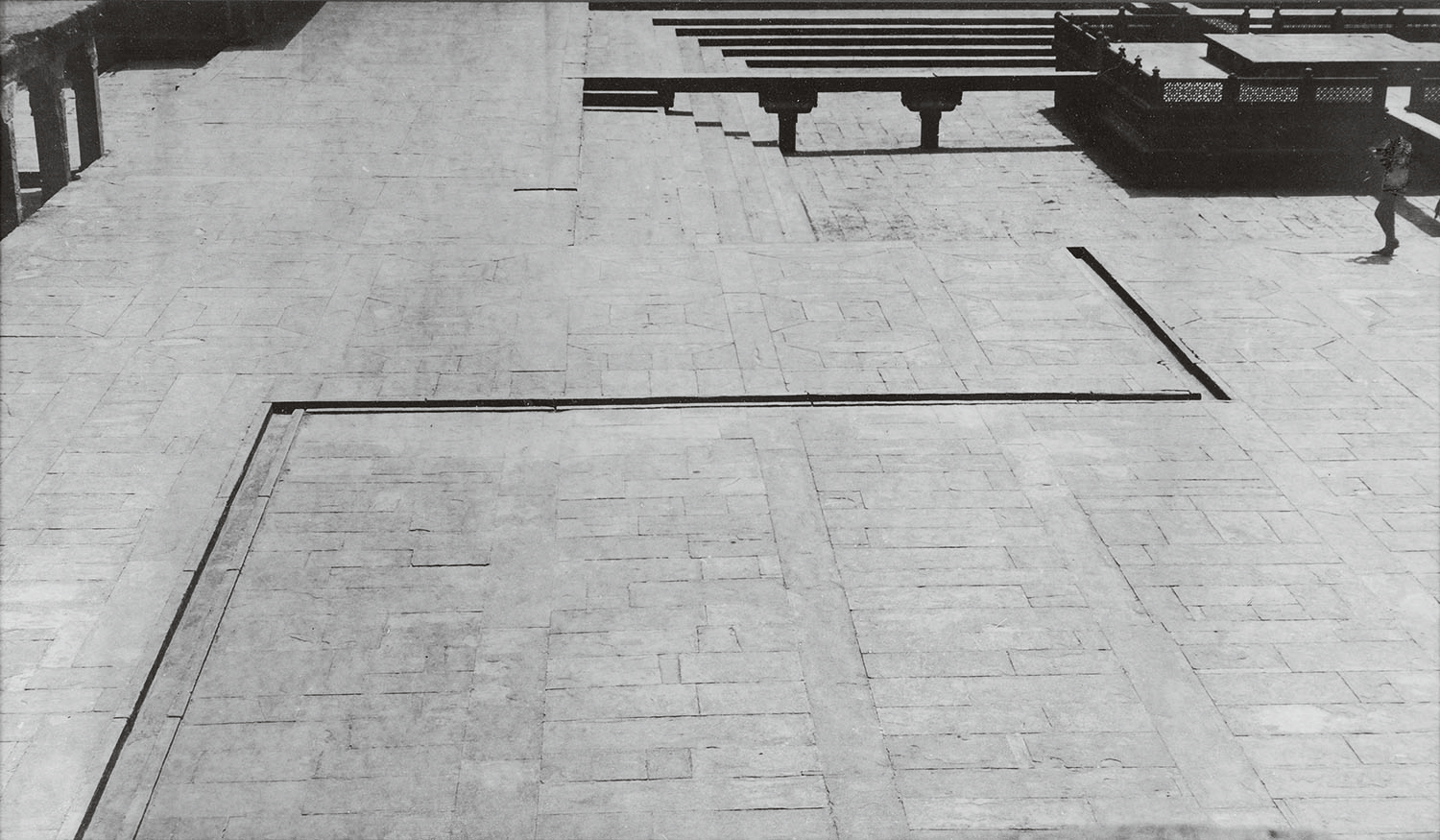Emerging from a culture where colorful, narrative, and figurative paintings were at the center of traditional and modern art, Nasreen Mohamedi’s work took a distinctive path, which developed as an abstract and Minimalist practice and departed from more established approaches to painting in post-Independence India. In 2005, The Drawing Center presented Nasreen Mohamedi’s first solo museum exhibition in the United States, entitled Lines among Lines. Today, the Nasreen Mohamedi retrospective at the Met Breuer (on view until June 5th) covers the artist’s entire professional timeline from the early 1960s to the 1980s, bringing together more than 130 of the artist’s drawings, paintings, photographs, and diaries.

Nasreen Mohamedi, Untitled, c.1975. Ink and graphite on paper, 20 × 28 inches. Sikander and Hydari Collection.
Nasreen Mohamedi was born in Karachi in 1937 and spent her childhood in Bombay (Mumbai). From 1954 to 1957 she attended the Saint Martin’s School of Art in London and later studied printmaking in Paris from 1961 to 1963. During the early 1970s and upon her return to India, she came in contact with the Minimalist artist Carl Andre. After joining the Bhulabhai Institute for the Arts in Mumbai, she also met several progressive modern figures and Indian abstract painters such as Gaitonde and M.F. Husain. Other well-known artists admired by Mohamedi were Malevich, Kandinsky, and Klee. During her brief life she travelled to many places, and from 1972 until her last years she taught at the Maharaja Sayajirao University of Baroda.
The opening section of the retrospective includes Mohamedi’s early pen and ink drawings, paintings on canvas, black-and-white photographs, prints, and watercolors, each of which was created with a limited palette occasionally interrupted by color. Some of these drawings imply recognizable forms such as trees and branches. Despite Mohamedi’s familiarity with Western art, and the abstract nature of her drawings that distinguished her practice from her contemporaries, certain characteristics of her work reflect the impact of Sufi Poetry and resonate with geometric abstraction and calligraphy in Islamic aesthetics.

Nasreen Mohamedi, Untitled, 1960s. Ink on paper, 9 5/8 × 13 7/16 inches. Private Collection. Copyright Estate of Nasreen Mohamedi / Courtesy Talwar Gallery, New York / New Delhi.
The exhibition continues by showcasing Mohamedi’s investigations in different drawing media alongside examples from her exploration of photography, which she began while visiting her family in Bahrain during the mid 1960s. Remaining un-exhibited throughout her lifetime, her precisely cropped photographs took a similar approach to light, shape, rupture, perspective, and texture as her drawings. In observing landscapes and nature, she delved into the formal essence of fundamental geometric patterns. In a laborious and rhythmic manner and through linear gestures, Mohamedi drew dynamic forms and arranged sets of parallel horizontal and diagonal lines as a way to explore dimension and the limits of space and perspective.

Nasreen Mohamedi, Untitled, c. 1972. Gelatin silver print, 7 11/16 × 13 1/4 inches. Kiran Nadar Museum of Art, New Delhi.
The Met Breuer retrospective displays the shifts and evolution in Mohamedi’s work, and her progressive dedication to the grid and restrained discipline. While many of Mohamedi’s works are undated, untitled, and unsigned, her day books and diary pages serve as tools for better understanding her process. The day books mark points in time when she revealed more of herself through notetaking. They also reveal the extent to which Mohamedi experimented with positive and negative space and with varying line densities. These small and accurately dated notebooks and pages are displayed in vitrines throughout the exhibition.
Standing out from the three decades of work on view, Mohamedi’s drawings demonstrate the artist’s developing interest in elementary forms; one notices that in the latest stage of her career, Mohamedi also produced her quietest drawings. The exhibition concludes with these intimately scaled and light drawings—minimal, floating compositions that go beyond the frames of the paper. The final part of the exhibition ranges from individual drawings to triptychs on plain backgrounds and graphite drawings on graph paper.

Nasreen Mohamedi, Untitled, c.1975. Ink and gouache on paper, 19 × 24 inches. Jayshree and Sanjay Lalbhai.
Nasreen Mohamedi’s life was filled with losses and tragedies, beginning with her mother’s death when the artist was young. She was later left at the altar by her lover and lost her father and brother due to Huntington’s disease, which also affected her throughout her life and led to her untimely death in 1990. Due to this physical condition, Mohamedi used a mechanical drawing instrument.
The sense of control, deliberateness, calmness, emptiness, and boundlessness in Mohamedi’s work demonstrate the artist’s self-imposed discipline, which she practiced to counterbalance the uncontrollable nature of the challenges she encountered. Nasreen Mohamedi at the Met Breuer gives a glimpse into the process and also the personal history of Mohamedi’s singular approach to geometric abstraction.
-Alma Sinai, Communications Intern
